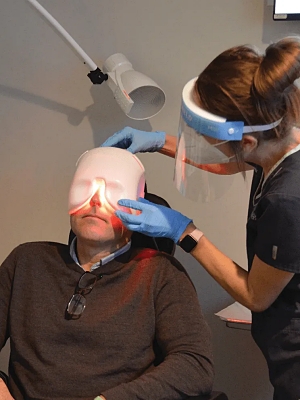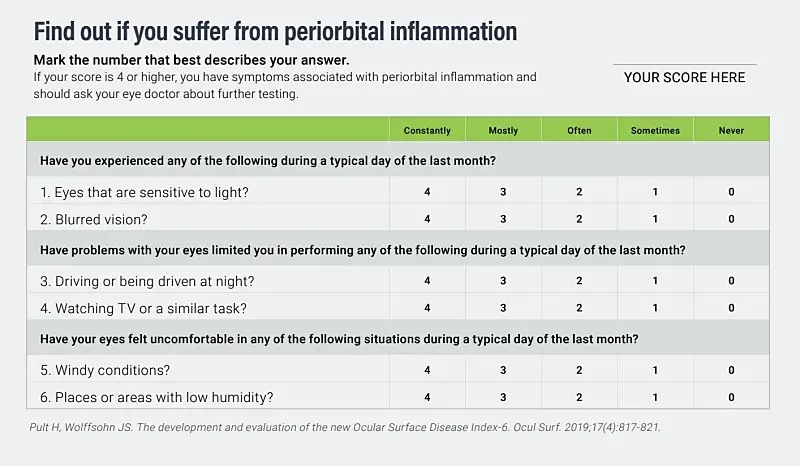Low-Level Light Therapy for Dry Eye Treatment
Do your eyes burn, sting, or have a scratchy sensation? Are your eyes sensitive to light? Do you have trouble wearing contact lenses due to dryness? You may suffer from periorbital inflammation. Low-level light therapy can help!
What Can Be Done For Periorbital Inflammation?
 Low-Level Light Therapy (LLLT)
Low-Level Light Therapy (LLLT)
Developed by NASA, LLLT uses specially designed LED lights to gently warm the eyelids, causing the meibomian glands to unclog and release oils.
- Safe, non-invasive procedure
- 15 minutes per session
- No recovery time needed
- No side effects or discomfort
- Safe for adults and children
It’s quick and painless! Simply lay back with the patented LLLT mask on and relax as the warm light clears your glands. It may also help decrease the appearance of facial wrinkles, acne, and rosacea.
Tears are essential for good eye health
After a blink, a tear film coats the surface of the eye and performs many functions for your benefit:
- Tears prevent dryness by coating and lubricating the surface of the eye.
- Tears supply oxygen and nutrients to the surface of the cornea.
- Tears form a barrier from infection and irritants washing away foreign substances.
- Tears help to heal damage to the surface of the eye.
- Tears create a smooth surface on the eye to help you to see more clearly.
Healthy tears maintain a stable tear film over the eye between blinks. If the tear film is not thick enough or doesn’t have enough lipid layer (the outer layer that holds the tear together), the tear can break apart and expose the surface of the eye. If this happens regularly, dry eye disease may result.
What causes Periorbital Inflammation?
Periorbital inflammation is caused by inflammation on the surface of the eye which can be triggered by a variety of factors such as:
- Aging
- Dry, dusty or windy climate
- Insufficient blinking (such as when you’re staring at a computer screen)
- Long-term contact lens wear
- Medication side effects
- Eye surgery
Often, periorbital inflammation is caused by blocked meibomian glands. These are the glands that make the oily, outer layer of the tears. A blockage in the glands can cause insufficiencies in tear film thickness, causing the tears to break apart when they shouldn’t.
